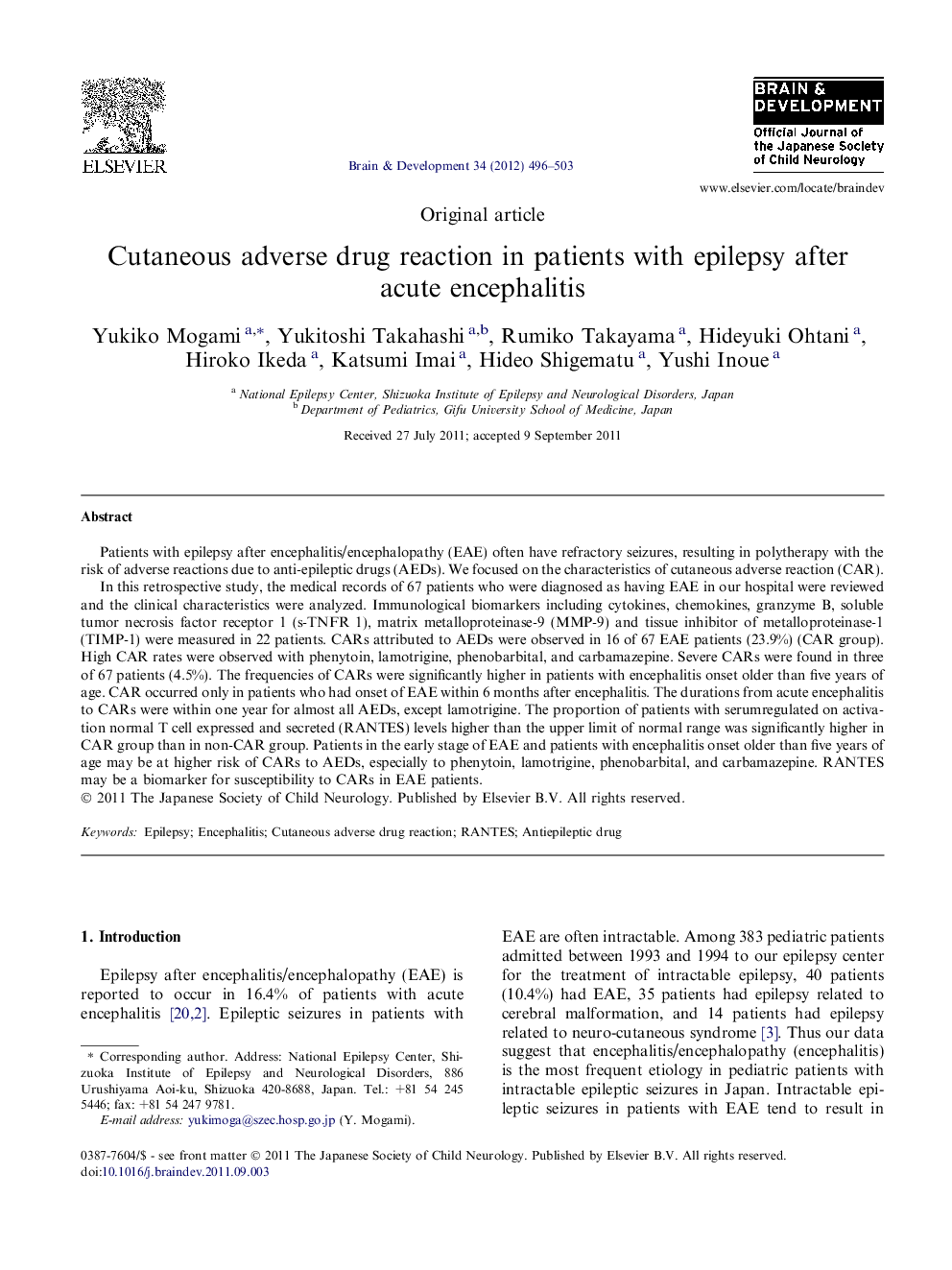| Article ID | Journal | Published Year | Pages | File Type |
|---|---|---|---|---|
| 3037623 | Brain and Development | 2012 | 8 Pages |
Abstract
In this retrospective study, the medical records of 67 patients who were diagnosed as having EAE in our hospital were reviewed and the clinical characteristics were analyzed. Immunological biomarkers including cytokines, chemokines, granzyme B, soluble tumor necrosis factor receptor 1 (s-TNFR 1), matrix metalloproteinase-9 (MMP-9) and tissue inhibitor of metalloproteinase-1 (TIMP-1) were measured in 22 patients. CARs attributed to AEDs were observed in 16 of 67 EAE patients (23.9%) (CAR group). High CAR rates were observed with phenytoin, lamotrigine, phenobarbital, and carbamazepine. Severe CARs were found in three of 67 patients (4.5%). The frequencies of CARs were significantly higher in patients with encephalitis onset older than five years of age. CAR occurred only in patients who had onset of EAE within 6 months after encephalitis. The durations from acute encephalitis to CARs were within one year for almost all AEDs, except lamotrigine. The proportion of patients with serumregulated on activation normal T cell expressed and secreted (RANTES) levels higher than the upper limit of normal range was significantly higher in CAR group than in non-CAR group. Patients in the early stage of EAE and patients with encephalitis onset older than five years of age may be at higher risk of CARs to AEDs, especially to phenytoin, lamotrigine, phenobarbital, and carbamazepine. RANTES may be a biomarker for susceptibility to CARs in EAE patients.
Related Topics
Life Sciences
Neuroscience
Developmental Neuroscience
Authors
Yukiko Mogami, Yukitoshi Takahashi, Rumiko Takayama, Hideyuki Ohtani, Hiroko Ikeda, Katsumi Imai, Hideo Shigematu, Yushi Inoue,
